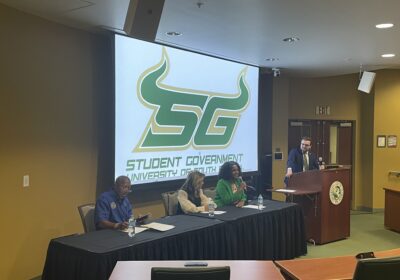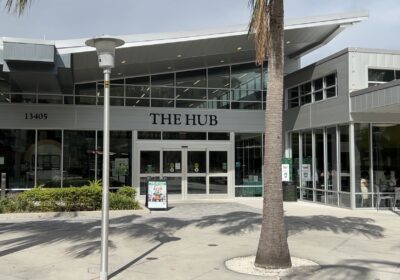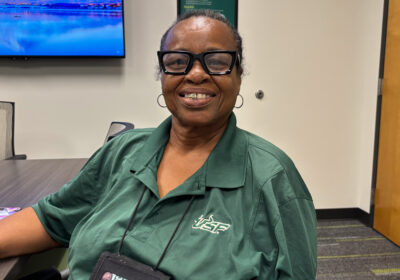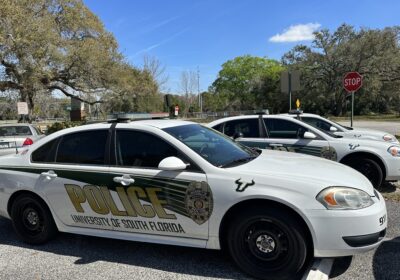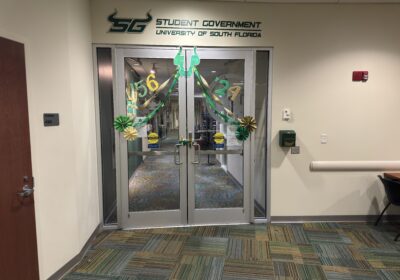USF to release ‘hybrid’ fall course schedules next week

After months of planning and uncertainties surrounding COVID-19, USF on July 24 will release finalized course schedules, consisting of in-person and online classes, for the fall semester.
The university will implement a flexible hybrid academic model, including a mix of face-to-face, hybrid and fully online courses. Depending on the class size or subject, USF Provost Ralph Wilcox said the delivery mode might change.
Without the in-person component, fully online courses — also known as all-distance learning (AD) — will consist of 100 percent direct instruction delivered through a virtual platform, either synchronous or asynchronous. Students will also have the option to take primarily distance learning courses (PD), where 80-99 percent of instruction will be delivered online.
Wilcox said that only AD and PD courses will be assessed a distance learning fee of $30 per credit hour.
For the classroom (CL) instructional method, less than 50 percent of instruction will be online. In addition, Wilcox said the university encouraged faculty to create contingency plans to shift to online delivery “at any point in the fall semester should it become necessary.”
Similar to classroom instructional methods, hybrid blend (HB) courses will consist of a blended delivery mode of in-person instruction and synchronous and/or asynchronous online sessions. Students enrolled in HB courses will have between 50-79 percent of online instruction.
“The beauty of the hybrid or the blended model is that a faculty member can teach face to face or in a synchronous or asynchronous manner at any point, so they can step in and out of those different modes of delivery at any point in the semester or any point in a given week, for that matter,” Wilcox said Wednesday.
“The student would still have synchronous access, meaning he or she would be taking the class at the scheduled time and would have direct interaction, either face-to-face classroom or utilizing technology through a synchronous interaction online.”
Based on the Centers for Disease Control and Prevention (CDC) guidelines, Wilcox said the university reconfigured spaces and classrooms across all three campuses — Tampa, St. Petersburg and Sarasota-Manatee — to allow face-to-face instruction while maintaining physical distance between seats. As a result, only a limited number of students will be allowed in classrooms at a time.
For instance, if 50 students are enrolled for either face-to-face or hybrid instruction, about 35 of those would be allowed to attend the in-person class based on the classroom’s capacity under CDC guidelines, according to Wilcox. The remaining 15 students would then be subject to class rotation or attend the lecture through a livestream.
“If all 50 students want face-to-face instruction at some point, there will likely be a rotation, or scheduled rotation that students can show up in-person every other class perhaps or every other week, or it may be that 15 of the 50 students would be enrolled in that class, and would engage in synchronous learning, while the other 35 students were physically in the classroom,” Wilcox said.
“In essence, all 50 would have full interactive capability with a professor at that given time. Some of us would be doing this. Others actually would be sitting in the classroom, with a professor.”
Associate Vice President for Innovative Education Cynthia DeLuca said the facilities management team created a template to draw capacity for each teaching space across all three campuses.
“These templates used 6-foot radius circles to represent students to ensure the recommended physical distancing space between seats,” DeLuca said. “Using this model, on average, teaching spaces were reduced to around 30 percent of their original capacity. Facilities Management produced layouts for each one of the almost 700 teaching spaces across all USF campuses.”
Wilcox said the university will implement policies that will prioritize the needs of certain student groups, whether it is to take in-person or online classes. Similar to when registering for classes, such groups will be based on different criteria, including class standing and disabilities, according to Wilcox.
Nonetheless, students enrolled in hybrid courses will have the option to take it fully online if they want to avoid the in-person component.
In the same way that only a limited number of classes will be delivered in person, Wilcox said that not all classes will be offered online.
When creating the class schedules for the fall semester, Wilcox said the decision has been based on “promoting the health and well-being” of students, faculty and staff, as well as guaranteeing student access.
“Some of our faculty have told us that it’s just not possible to deliver some courses in an online or virtual setting and this is particularly important for performance-based classes in the arts, within the School of Music, in theater and dance,” Wilcox said. “Or, in other disciplines, and for upper division and graduate lab sections.
“USF’s Point of Pride focuses on student access, ensuring that students are provided an opportunity to take the classes they need at any particular point in time on their academic journey that will support their timely progression to graduation. So we want to provide students access to those classes.”
Although the finalized schedules will be released July 24, Wilcox said the university might add new classes or sections based on student demand until the end of the first week of classes.
Due to the rising positive cases of COVID-19 across the state, the university postponed the transition to phase II, originally scheduled for June 29, of its four-phased Resuming University Operations Amid a Global Pandemic plan until further notice.
As previously reported in The Oracle, the university might still be in phase II of its reopening plans by the time fall classes begin instead of phase III as originally planned.
However, it might impact the number of face-to-face and blended hybrid classes that can be delivered, according to Wilcox.
“I don’t believe we set a benchmark there but obviously the percentage of faculty and staff returning would in turn determine the number of face-to-face or blended hybrid classes that can be delivered, or would be delivered on any of our campuses,” Wilcox said.
For phase II, up to 50 percent of staff will be allowed to return to campus, compared to 75 percent in phase III.
USF has been in phase I since June 15, with about 25 percent of staff back on campus.
Wilcox said the university will transition into the next phases of the reopening plan once there’s a continued decline in the positivity rate for a period of two weeks.
While the conditions might change, Wilcox said that faculty will need their supervisor’s approval before making any change in the delivery mode of their courses.
“It’s unfair on students to simply change the mode of delivery on the spur of the moment depending upon conditions so we’re going to manage that responsibly,” Wilcox said. “With a focus on student success, we want students to benefit from the most effective instruction and learning experience that we can deliver.”
Wilcox said the difference between online courses delivered in the spring compared to the upcoming plans for fall is like “day and night.”
“In order to deliver quality online classes, faculty members have been required to work with our professional development teams in innovative education to ensure the design and delivery of courses in the fall is superior, both in terms of the media-rich technology platform being used, the tech and the pedagogical techniques implemented to ensure student learning,” Wilcox said.
“This is all about instructional delivery. Instructional delivery is only effective if students actually learn.”
Despite the rising cases across the state, the university’s plan to deliver a full class schedule across all three campuses is still in place. However, Wilcox said the plans could change depending on the virus’ conditions.
“We’re on target to move forward,” Wilcox said. “Now, at the end of the day, of course, it’s the virus that will determine quite what class delivery looks like at any point throughout the semester.”

